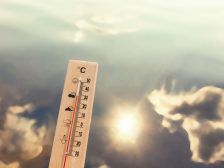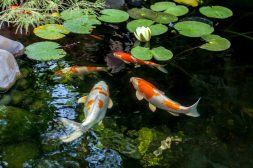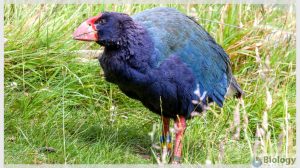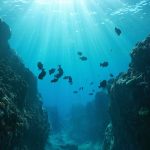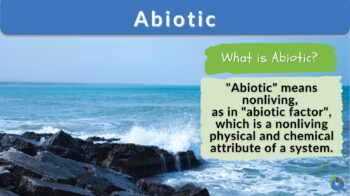
Abiotic
adj., [ˌeɪ.baɪˈɑt.ɪk]
Definition: Of, characterizing, or pertaining to non-living (factors)
Table of Contents
An abiotic factor in Ecology or Biology pertains to any constituent within an ecosystem that lacks inherent life or living organisms. Essentially, abiotic factors encompass non-living elements or characteristics of a system, typically characterized by their physical and chemical attributes, devoid of any biotic qualities or traits.
Have you ever walked into a park or forest? Picture yourself on the edge of a sprawling forest, a place where nature’s symphony of birdsong resonates through the air, and sunlight filters gently through the canopy of trees casting enchanting patterns on the forest floor. Yet, this is more than a mere collection of trees, plants, and animals; it is a dynamic and interconnected world, an ecosystem, where life and the environment harmoniously coexist and shape one another.
An ecosystem encapsulates the intricate relationship between living organisms (biotic in nature) and their non-living surrounding mediums (abiotic in nature). This represents a captivating interplay of life’s diversity within a specific environment. From towering trees to the other organisms (microscopic in nature) in the soil, each “biotic participant” in this intricately woven ecosystem contributes to the ecosystem’s functioning and resilience.
But, what do you think is the role of the “abiotic components or factors”?
In this article, we will discuss in detail how and why abiotic factors or components form such an important part of the ecosystem. We will understand their functions, roles, and varieties in the ecosystem of which we are a part. Read on to learn more!
Abiotic Definition
Abiotic (factor or component) in Biology refers to any component of the ecosystem that is devoid of life. Abiotic can also be defined as non-living components or attributes of a system that usually bears physical and chemical traits but no biotic traits.
When we discuss biotic and abiotic components of the ecosystem, we must understand that they are central to comprehending the ecosystem’s complexity. Both of these elements act as the foundational pillars that drive the intricate workings of the ecosystem and offer insights into its inner workings.
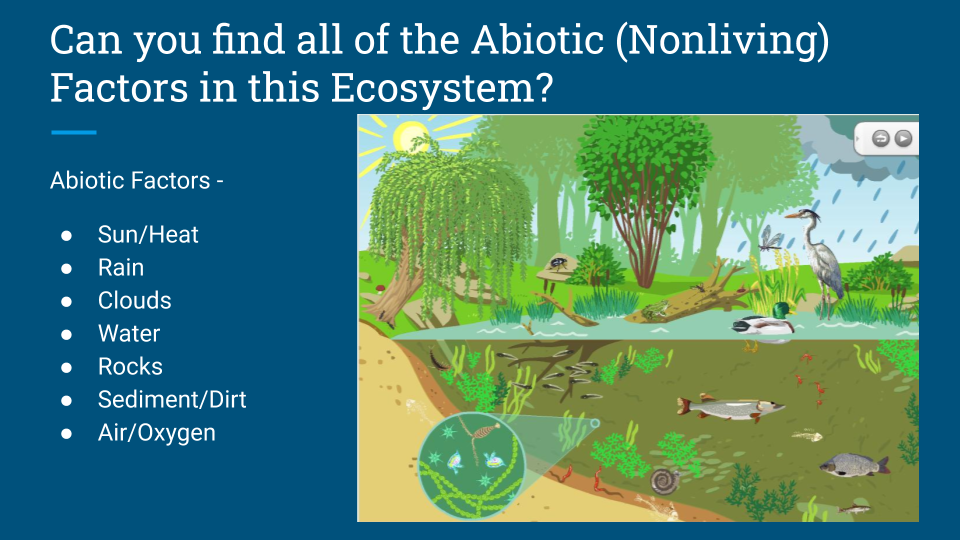
Like in the above example of a forest, the biotic factors/components will encompass the living entities within the ecosystem. The majestic trees, the playful squirrels, the delicate flowers, nitrogen-fixing bacteria, and the bustling insects; all of these organisms interact in a myriad of ways like “predator-prey relationships”, “photosynthetic and nitrogen-fixation mechanisms” and partnerships like “symbiosis” and “mutualism” where species rely on each other. These interactions create a complex interplay of relationships that influence population dynamics, food chains, and the overall biodiversity of the ecosystem.
Now, complementing the above biotic components/factors are the non-living elements that shape the ecosystem. Sunlight, temperature, rainfall, soil composition, and water availability are all of those elements that fall into this category. Considering sunlight’s role, it fuels the process of photosynthesis and drives the energy flow within the ecosystem. Temperature and water availability, on the other hand, dictate the types of organisms that can thrive in a given ecosystem or environment. The extent of rainfall in a region will determine the type of flora and fauna of the region. The vegetation of a region is also primarily dependent on the soil composition and type. This is how abiotic factors provide the stage upon which life’s drama unfolds and determines the boundaries and possibilities for biotic components or factors.
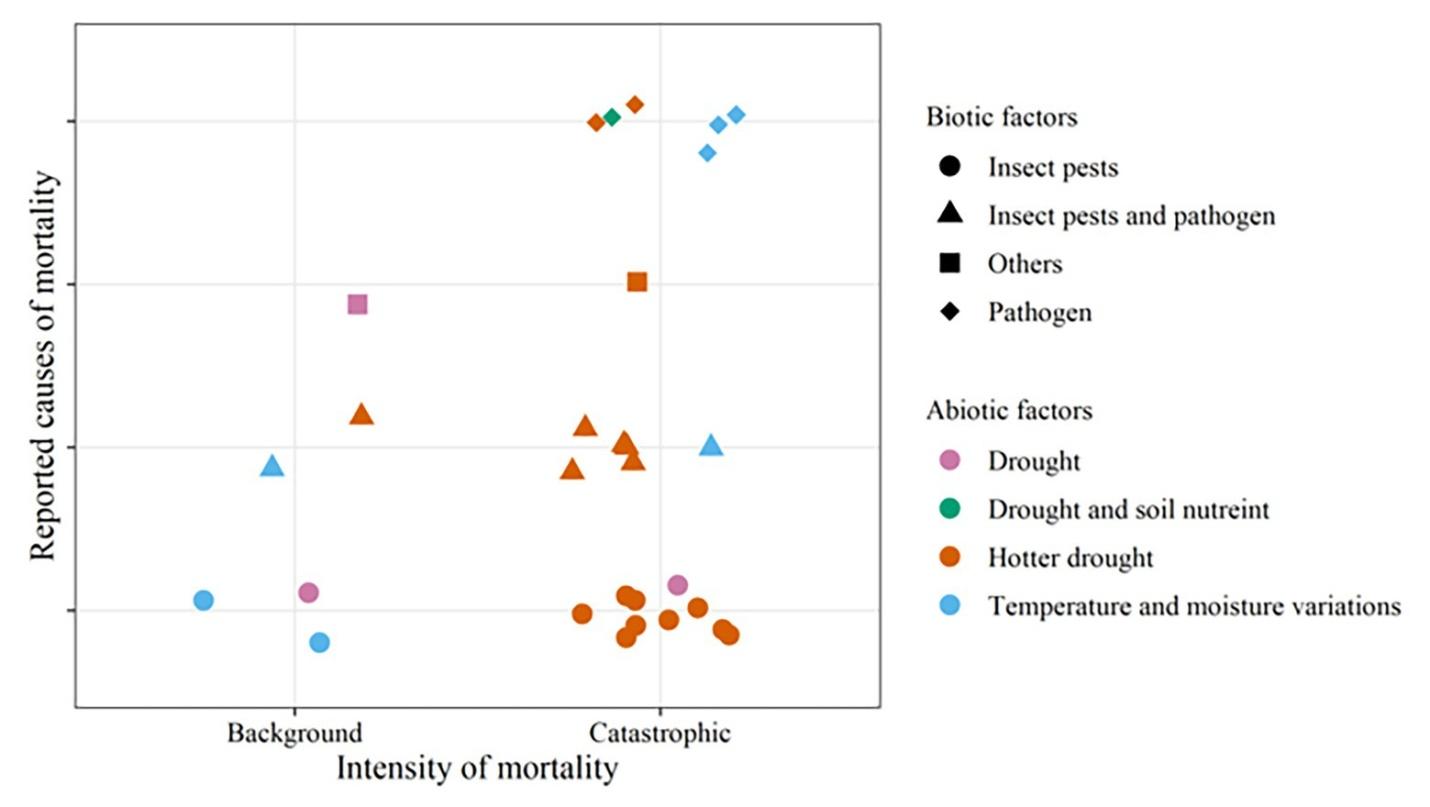
Collectively, the interactions between biotic and abiotic factors define an ecosystem’s character. Changes in one element can set off a “chain reaction” throughout the system that can lead to adaptations, shifts in populations, and even the emergence of new species over time. This makes studies of ecology so important. It helps one unravel these intricate connections between abiotic and biotic factors allowing a deeper understanding of ecosystems, and empowering one to conserve and preserve these remarkable systems that underpin life on Earth.
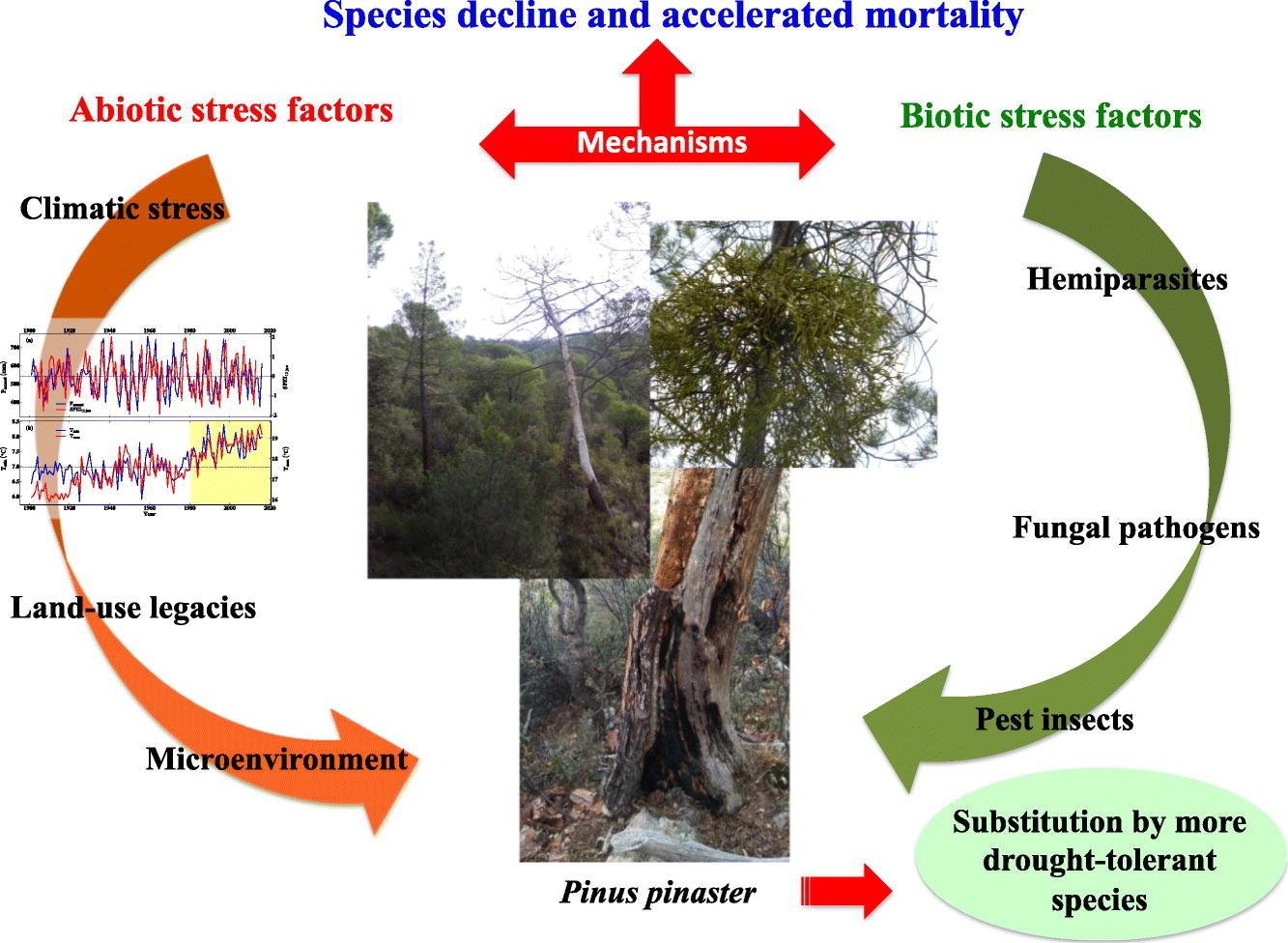
Abiotic Etymology
The term abiotic was first used in 1874. It has been derived from two Greek words; the first one is “a” meaning ‘without’ and the second one is “biotic” meaning ‘life’. Biotic is further derived from an ancient Greek word “biotikos” which has been further derived from 2 ancient Greek words “bios” and “ikos”.
Watch this vid about abiotic factors (as well as biotic factors):
Biology definition:
The term “abiotic” refers to the nonliving, as in abiotic factor, which is a nonliving physical and chemical attribute or factor of a system. Compare: biotic
Abiotic Examples
There are several abiotic components or factors around us in the environment that affect the functioning of the living organisms in the ecosystems. Not only do they underpin the Biology of the biotic components as a whole, but they also form the mere basis of an ecosystem where biotic components thrive by fulfilling all basic requirements for their survival.
Some important examples of abiotic components or factors are:
- Soil (texture, color, composition)
- Air (quality, composition)
- Sunlight (intensity and UV index)
- Water (availability, organic content, oxygen levels)
- Temperature (depending on the altitude and latitude)
- pH levels (depending on the presence of acidic or basic constituents)
- Wind (wind patterns, speed, direction)
- Salinity (depending on the salt concentration levels)
- Pressure (depending on the height of the sea level)
- Mineral availability (depending on the type of essential minerals and nutrients)
- Topography (physical features of the land)
- Natural disturbances (volcanic eruptions, hurricanes, forest wildfires)
NOTE IT!
“The Human Symphony:
Altering Nature’s Chorus of Abiotic Factors”
Do you know that human activities have led to a staggering 30% increase in the Earth’s atmospheric carbon dioxide levels (CO2) since the Industrial Revolution which not only confers profound negative implications for human health but also for the overall health of all biotic components (living organisms) of all the ecosystems?
As for abiotic factors, human activities have indeed caused significant anthropogenic changes to various abiotic factors too, which in turn affects the health and functioning of ecosystems in a myriad of ways. Human agency has assumed a pivotal role as agents of change in the intricate interplay of natural phenomena. In doing so, we have inscribed revised narratives for the habitats of numerous species.
One of the most critical species on the brink of habitat loss due to disruption of abiotic factors like “global temperature” and atmospheric carbon dioxide levels by human activities is the polar bear (Ursus maritimus). These majestic creatures inhabit the Arctic region where they have evolved to thrive in a finely balanced environment characterized by sea ice, frigid temperatures, and marine ecosystems.
However, the unprecedented rate of global warming caused by human-induced climate change has resulted in a dramatic reduction in Arctic sea ice. According to NASA’s Global Climate Change Website, over the past four decades, the average annual minimum sea ice extent in the Arctic has decreased by about 12.6% per decade. Sea ice is a vital platform for polar bears as it provides them with access to their primary prey i.e. seals. A study by Harry L. Stern and Kristin L. Laidre in 2016 estimated that from 1979-2016, the total number of ice-covered days in the Arctic declined by 7–19 days per decade. This reduction in ice-covered days directly affects polar bears’ ability to hunt and access seals. Not only does the sea ice serve as a platform for food for polar bears but also provides the basic habitat for rest and breeding. The WWF (World Wildlife Fund) estimates that the global polar bear population is currently around 22,000 to 31,000 individuals. However, several subpopulations are declining due to sea ice loss.
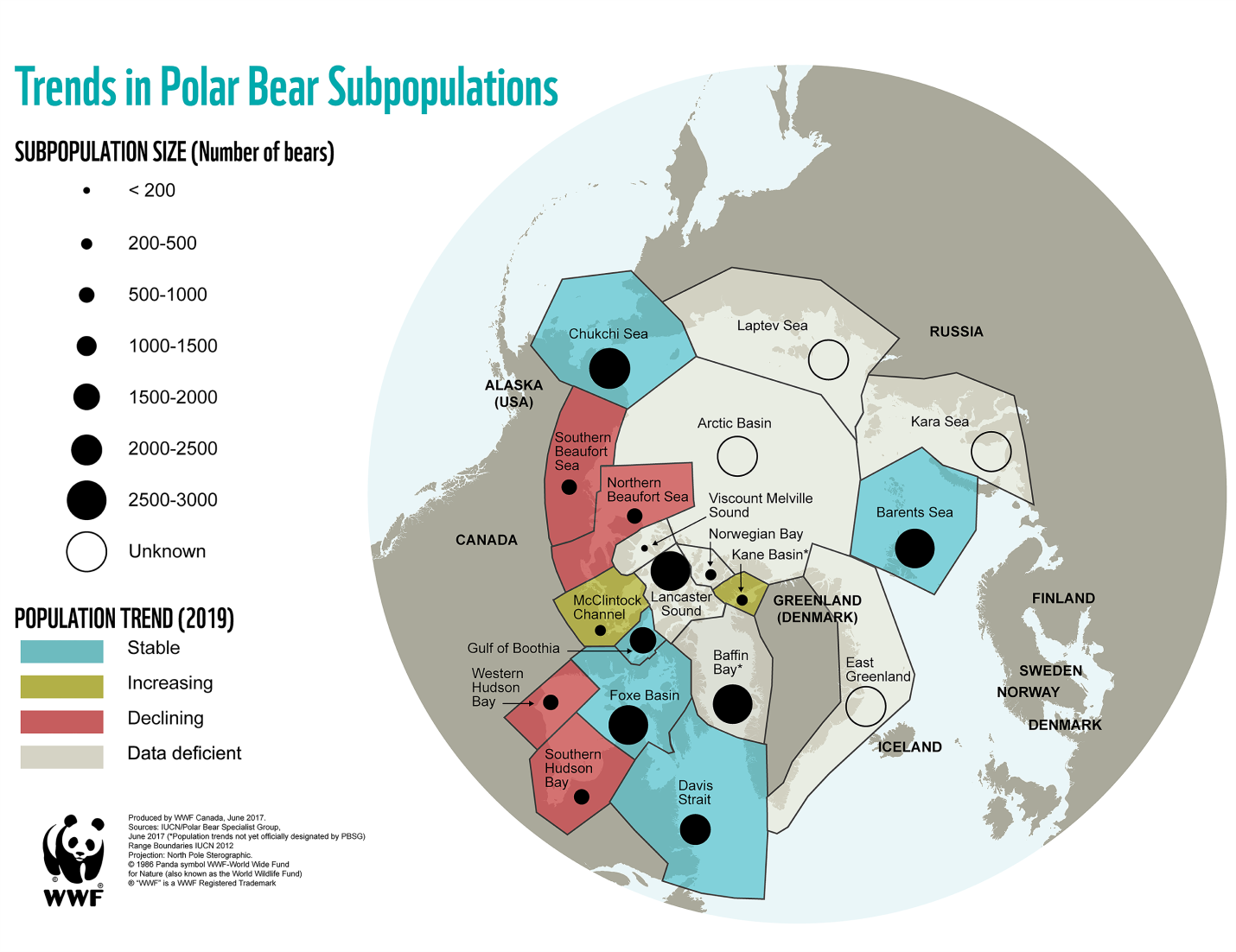
As temperatures rise and sea ice melts, polar bears are forced to travel longer distances to find suitable hunting grounds. Rode K.D. et al. reported in 2010 that prolonged ice-free periods have limited their ability to access food sources which have led to increased stress, malnutrition, and reduced reproductive success. This disruption to the bears’ habitat and hunting patterns has already resulted in declining body conditions and reduced cub survival rates. Furthermore, the loss of sea ice also forces polar bears to spend more time on land, where they have limited access to food and are more likely to come into contact with human settlements. This increases the potential for conflicts with humans and further exacerbates the challenges faced by these iconic Arctic predators.
The plight of the polar bear serves as a poignant example of how human-induced disruption of abiotic factors, particularly through climate change, can have cascading effects on entire ecosystems and imperil keystone species. Urgent conservation efforts and global initiatives to mitigate climate change are crucial to safeguard the future of the polar bear and its fragile Arctic habitat…!!!
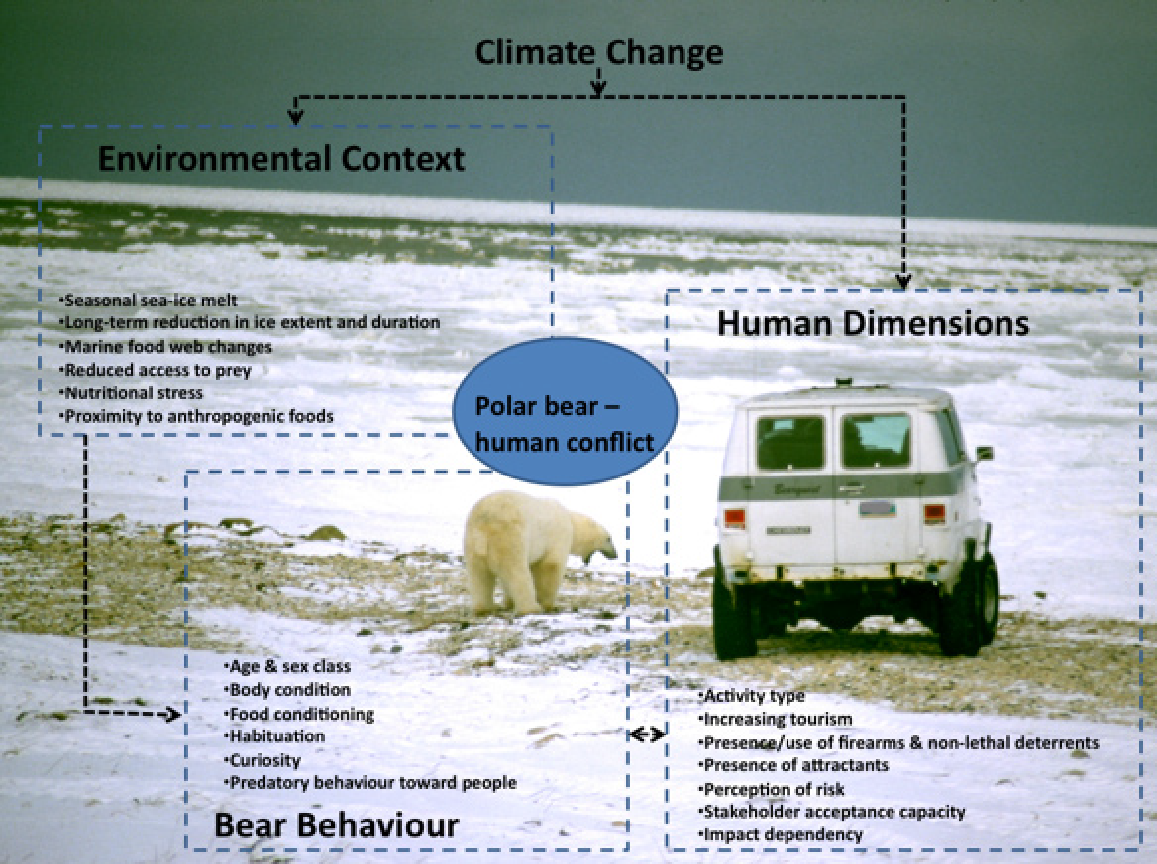
Take the Abiotic – Biology Quiz!
Further Reading
References
- Teshome, D. T., Zharare, G. E., & Naidoo, S. (2020). The threat of the combined effect of biotic and abiotic stress factors in forestry under a changing climate. Frontiers in plant science, 11, 1874.
- Gea-Izquierdo, G., Férriz, M., García-Garrido, S., Aguín, O., Elvira-Recuenco, M., Hernandez-Escribano, L., … & Raposo, R. (2019). Synergistic abiotic and biotic stressors explain widespread decline of Pinus pinaster in a mixed forest. Science of the Total Environment, 685, 963-975.
- NASA’s Global Climate Change Website https://climate.nasa.gov/vital-signs/arctic-sea-ice/
- Stern, H. L. and Laidre, K. L.: Sea-ice indicators of polar bear habitat, The Cryosphere, 10, 2027–2041, https://doi.org/10.5194/tc-10-2027-2016, 2016.
- WWF Factsheet on Polar Bears https://www.worldwildlife.org/species/polar-bear
- Rode, K. D., Amstrup, S. C., & Regehr, E. V. (2010). Reduced body size and cub recruitment in polar bears associated with sea ice decline. Ecological applications: a publication of the Ecological Society of America, 20(3), 768–782. https://doi.org/10.1890/08-1036.1
- Clark, D. A., van BEEST, F. M., & Brook, R. K. (2012). Polar bear-human conflicts: state of knowledge and research needs. Canadian Wildlife Biology and Management, 1(1), 21-29.
©BiologyOnline.com. Content provided and moderated by Biology Online Editors.

